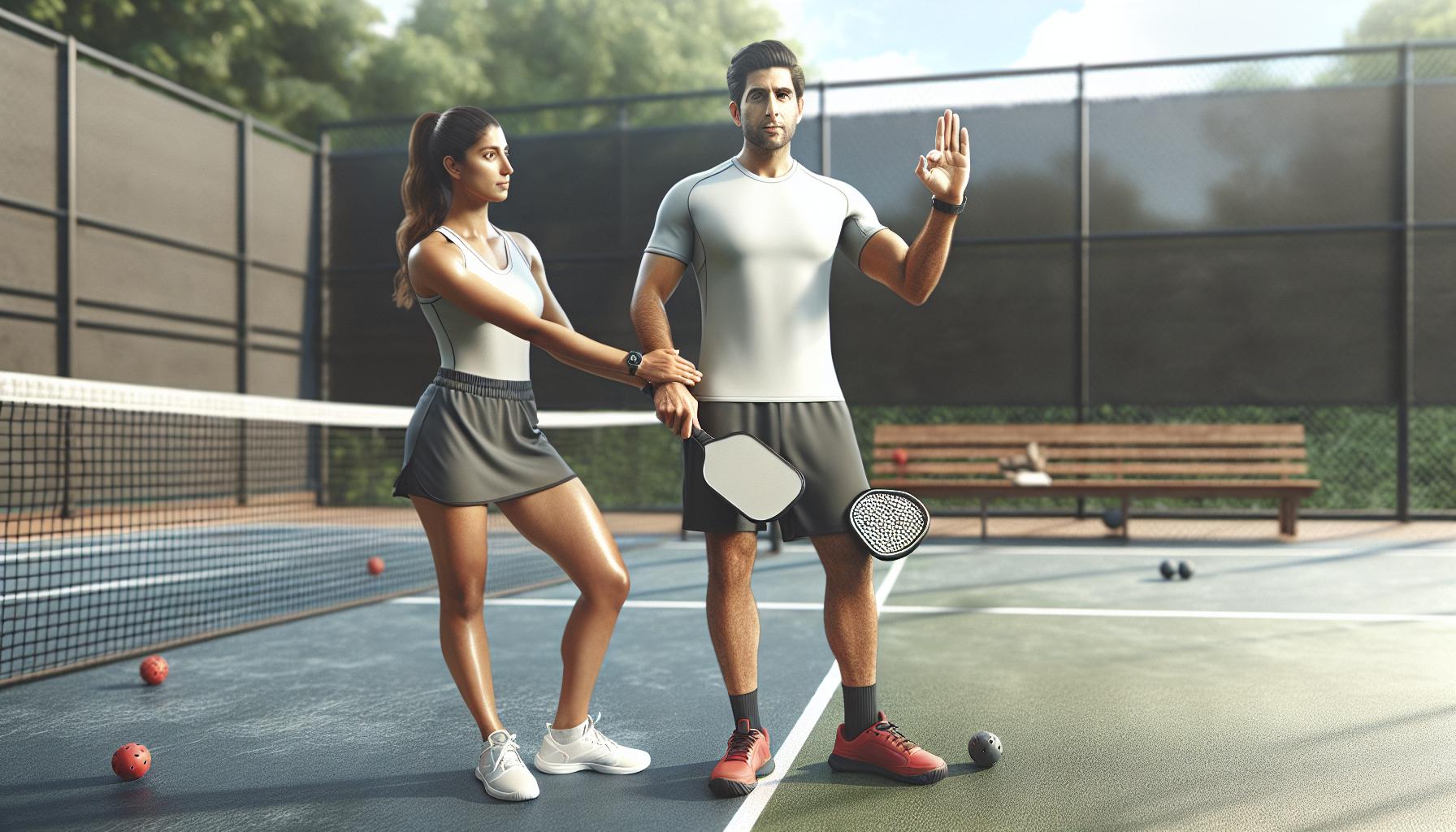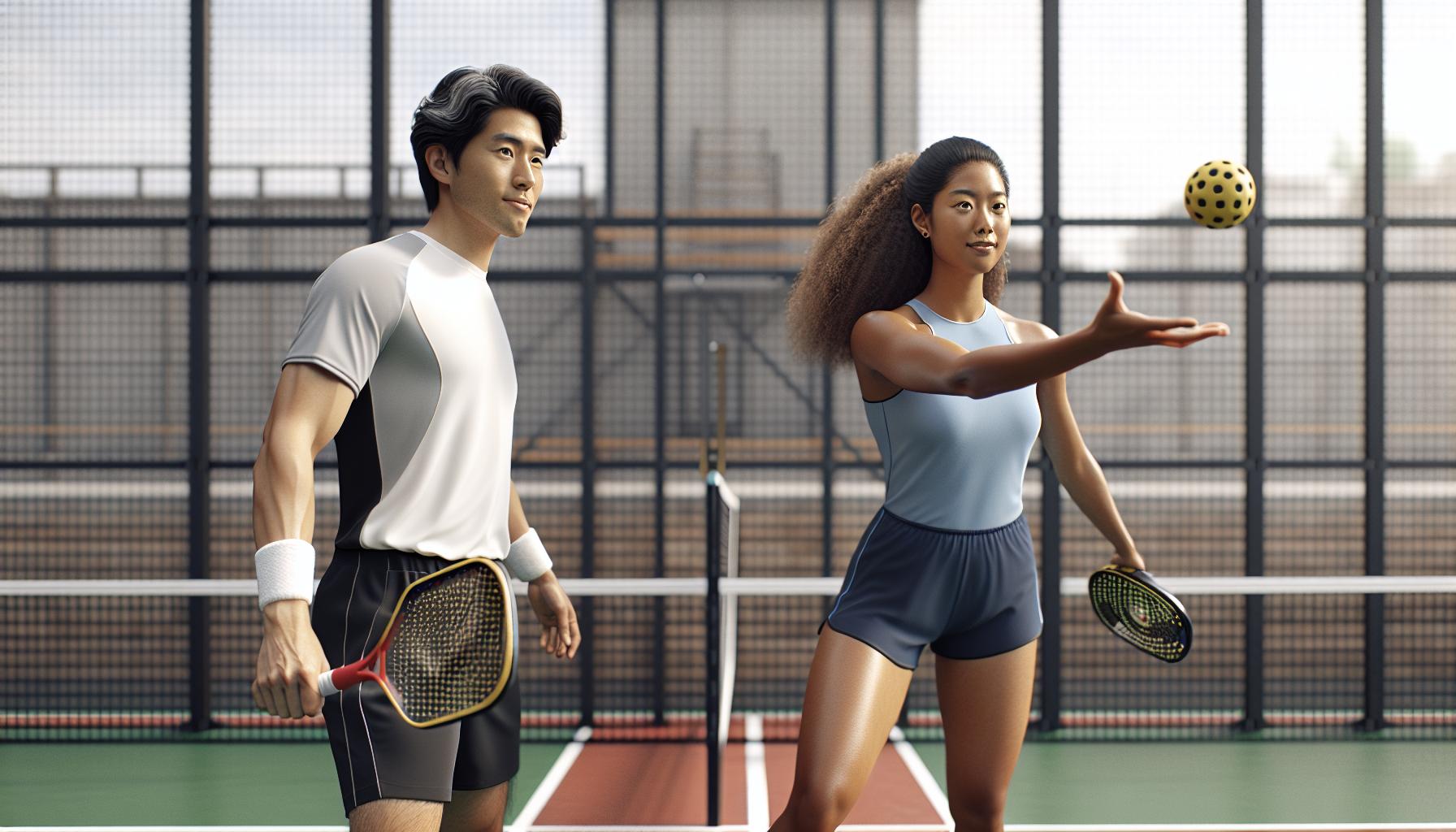Switching sides in pickleball might seem like a small detail, but it’s a move that can significantly impact your game. Whether you’re a seasoned player or just picking up a paddle for the first time, knowing when and how to switch sides efficiently can be a game-changer.
This maneuver isn’t just about physical movement; it’s a strategic play that requires timing, coordination, and communication with your partner. It’s an art that, when mastered, can keep your opponents guessing and give you an edge on the court. Let’s dive into the ins and outs of correctly switching sides in pickleball, ensuring you’re always one step ahead.
Importance of Switching Sides in Pickleball
Switching sides in pickleball is not just a routine part of the game; it’s a strategic maneuver that can significantly impact the outcome of a match. Understanding why and how to effectively switch sides can give players a competitive edge, making it an essential skill for both beginners and seasoned athletes.
Firstly, switching sides helps to balance out environmental conditions. Whether it’s the sun’s glare, wind direction, or uneven court surfaces, changing sides ensures that no team has a prolonged disadvantage due to external factors. This aspect of the game keeps the competition fair and balanced.
Another crucial reason for switching sides is to exploit opponents’ weaknesses. By observing the opponents’ gameplay and identifying their less dominant side, players can adjust their positions to target those vulnerabilities. This tactical move requires keen observation skills and adaptability but can lead to gaining crucial points in a tightly contested match.
Moreover, switching sides fosters better communication and coordination among teammates. It encourages players to discuss strategies and adjust their game plan based on the current score and performance. This continuous dialogue and reassessment of tactics can enhance team synergy and increase the chances of winning.
Lastly, the act of switching sides can also serve as a mental reset. It offers players a brief moment to regroup, refocus, and break the opponents’ momentum. This psychological advantage can be especially beneficial in turning the tide of the match when facing a challenging situation or recovering from a series of lost points.
To harness the full benefits of switching sides, players should:
- Communicate effectively with their partner before and during the switch.
- Observe the opponents’ gameplay to identify any weaknesses or patterns.
- Adapt their positioning and tactics accordingly.
Understanding and mastering the art of switching sides in pickleball can indeed transform the dynamics of the game. It’s not merely a procedural part of playing but a strategic tool that, when used wisely, can greatly enhance a team’s performance on the court.
Timing: When to Switch Sides

Switching sides in pickleball isn’t just about knowing how to do it; it’s equally about knowing when. Timing this strategic maneuver can make a significant difference in a team’s performance and their ability to dominate the game. While the rules of pickleball dictate specific moments for side switching, such as at the end of a game or in certain scoring situations during a tournament, players should also recognize the subtle, strategic opportunities to switch sides that aren’t dictated by the rule book.
First and foremost, switching sides at the start of a new game is a given. This allows teams to adapt to the changing conditions of play, such as the sun’s position or wind direction. However, during tournament play, players may also be required to switch sides when the first team reaches 6 points in a game to 11. This rule helps maintain fairness by ensuring that both teams face the same environmental and court conditions for approximately equal amounts of time.
Beyond these rules, players should consider switching sides to exploit opponent weaknesses. If a player notices that an opponent struggles with shots coming from a certain direction, they might suggest a quick side switch to their partner to capitalize on this vulnerability. Similarly, if one team member is having an exceptionally good day with their serve or forehand, they might switch sides to maximize the use of this strength.
Improving communication and coordination is another reason to switch sides strategically. Sometimes, players find that their movements and communication are more fluid and effective from one side of the court than the other. If a team feels out of sync, switching sides during a match can sometimes reset their coordination and improve performance.
Incorporating sudden side switches as a surprise element can also throw opponents off balance. This tactic isn’t just about exploiting weaknesses; it’s about creating a momentary confusion or hesitation in opponents, providing a strategic advantage. However, this move requires caution and good judgment, as it can also disrupt the rhythm of the players implementing the switch if not executed correctly.
| Moment | Purpose |
|---|---|
| Start of a New Game | Adapt to changing game conditions |
| Reaching 6 Points in Tournament Play | Ensure fairness under changing environmental conditions |
| Opponent Weakness Exploitation | Gain a tactical advantage |
| To Improve Communication and Coordination |
Coordination with Your Partner

When it comes to mastering the art of switching sides in pickleball, coordination with your partner is not just beneficial—it’s essential. A seamless transition can be the difference between winning and losing a point. The key to success lies in clear communication and understanding each other’s movements and intentions.
Before entering a match, partners should discuss and agree on signals or verbal cues for switching sides. These could be as simple as a shout, a hand gesture, or even a quick head nod. Having a predetermined set of signals ensures that both players are in sync and aware of the plan without giving away their strategy to their opponents.
Practicing side switches during training sessions is another critical aspect. This not only helps in polishing the technique but also aids in building an intuitive understanding between partners. They learn to read each other’s body language and cues, which can be incredibly handy during high-pressure moments in a game. Coordination drills should mimic game scenarios as closely as possible, including different speeds and angles of the ball.
Furthermore, players should be aware of each other’s strengths and weaknesses. This knowledge allows them to decide on-the-fly who should take the lead or who is better positioned to handle an unexpected return from the opponents. For instance, if one partner has a stronger forehand, they might switch sides to exploit a particular angle or shot.
Adopting a flexible attitude towards switching sides is crucial. Despite all planning, pickleball is a dynamic game, and situations can change rapidly. Partners should trust each other’s judgment calls during the game, even if it means deviating from the pre-discussed plan. This adaptability can often catch opponents off guard and turn the tide in favor of the team that’s better coordinated.
To enhance side-switching efficiency, partners should also work on their spatial awareness and court positioning. Knowing exactly where they are in relation to the boundaries and to each other helps in executing swift and smooth side switches. This is especially important in pickleball, where the pace of the game can escalate quickly, leaving little time for adjustments.
In terms of positioning, adopting a staggered formation can be beneficial. This setup involves one player being slightly ahead of the other, allowing for easier movement and better coverage of the court. It also makes side switching more straightforward and less disruptive to the team’s flow and strategy.
Strategies for Efficient Side Switching

Switching sides in pickleball can often determine the outcome of a game, which makes mastering efficient side-switch strategies crucial for every player. Teams that execute smooth transitions not only preserve energy but also maintain a strategic advantage over their opponents. Below are some strategies that can help players achieve a more efficient side switch.
Establish Clear Signals
One of the most important aspects of side switching is the ability to communicate effectively with your partner. Clear signals are paramount:
- Verbal cues: Simple commands like “switch” or “stay” can be highly effective. However, they should be loud and clear amidst the heat of the game.
- Non-verbal cues: Sometimes, the noise of the court makes verbal communication hard. In these instances, establish hand signals or other non-verbal cues that both partners understand.
Understand Each Other’s Play
Knowing your partner’s tendencies and strengths is key to deciding who takes the lead during side switches. If one player has a stronger forehand, for example, positioning should allow them to use it more often. This requires an in-depth understanding and acknowledgment of each other’s gameplay strengths and weaknesses.
Practice Makes Perfect
Consistent practice focusing on side-switching drills can significantly improve a team’s performance. Include scenarios in your practice sessions that mimic match situations where sudden switches are necessary. This not only improves physical agility but also enhances mental preparedness.
Staggered Formation
Adopting a staggered formation allows for greater flexibility and court coverage. This means one player positions slightly ahead of the other, allowing them to respond more effectively to shots that come in between them. It also makes deciding who takes the ball during a switch less confusing, as the player closer to the shot naturally takes it.
Spatial Awareness
Players should always be aware of their position on the court as well as their partner’s. This awareness helps in making quick decisions about whether to switch or stay. Enhanced spatial awareness also reduces the chances of unexpected collisions or missed opportunities to take advantage of an opponent’s misplaced shot.
Adapt and Overcome
Finally, being flexible and ready to adapt is crucial in pickleball. No two games are the same, and opponents may sometimes force unexpected playstyles or strategies. Teams that can quickly adapt their side-switching tactics based on the flow of the game often find themselves in a winning position.
Practice Drills to Improve Side Switching

Mastering the art of side switching in pickleball isn’t just about knowing when and how to move—it’s about making those movements instinctive. That’s where practice drills come in. By incorporating specific exercises into their training routine, players can significantly enhance their ability to switch sides smoothly, without losing focus or strategic advantage.
One effective drill is the Shadow Switch Drill. This exercise requires partners to move in sync across the court without a ball. The goal is to mirror each other’s movements, focusing on communication and timing. Players start on one side of the court, decide who will move first, and then perform a side switch, mirroring each other’s steps and ending on the opposite side of the court. This drill emphasizes non-verbal cues and helps players develop a rhythm for moving in tandem.
Another drill that boosts side-switching prowess is the Ball Toss Switch Drill. In this exercise, players start on one side of the court with a ball in hand. As they switch sides, one player tosses the ball to a designated spot on the opposite side where their partner must catch it. This drill not only hones switching speed and accuracy but also improves players’ ability to anticipate and react to their partner’s movements.
To add complexity and realism, the Live Ball Drill puts players in actual game-like scenarios. Starting a point with the intention to switch sides mid-play, players execute the switch at an unpredictable moment, decided upon by a predetermined signal or spontaneously during the play. This drill is excellent for practicing switches under pressure, allowing players to apply their communication and movement skills in a dynamic setting.
Including these drills in a regular practice session can significantly improve a team’s side-switching capabilities. Here’s a quick recap of the drills mentioned:
- Shadow Switch Drill: Enhances syncing and non-verbal communication
- Ball Toss Switch Drill: Improves switching speed and anticipatory skills
- Live Ball Drill: Practices switching in game-like pressure situations
Incorporating such targeted exercises ensures players aren’t just mechanically moving across the court but are engaging with their partner in a coordinated, strategic manner. Drills that simulate actual game conditions are particularly valuable, as they prepare teams for the unpredictable nature of pickleball matches. With consistent practice, players will find that their ability to switch sides becomes more fluid and instinctive, leading to a more seamless game play.
Conclusion
Mastering the art of switching sides in pickleball isn’t just about moving from one side to the other. It’s about doing so with strategy, speed, and seamless communication. By incorporating drills like the Shadow Switch, Ball Toss Switch, and Live Ball into your practice routine, you’re not just preparing for the game’s physical demands but also honing your ability to anticipate and adapt. Remember, the key to a smooth side switch lies in practice and coordination. So grab your paddle, find a partner, and start drilling. With dedication and teamwork, you’ll find yourselves moving across the court more fluidly than ever before.














0 Comments